159
you are viewing a single comment's thread
view the rest of the comments
view the rest of the comments
this post was submitted on 04 Jul 2025
159 points (98.2% liked)
Technology
74006 readers
1230 users here now
This is a most excellent place for technology news and articles.
Our Rules
- Follow the lemmy.world rules.
- Only tech related news or articles.
- Be excellent to each other!
- Mod approved content bots can post up to 10 articles per day.
- Threads asking for personal tech support may be deleted.
- Politics threads may be removed.
- No memes allowed as posts, OK to post as comments.
- Only approved bots from the list below, this includes using AI responses and summaries. To ask if your bot can be added please contact a mod.
- Check for duplicates before posting, duplicates may be removed
- Accounts 7 days and younger will have their posts automatically removed.
Approved Bots
founded 2 years ago
MODERATORS
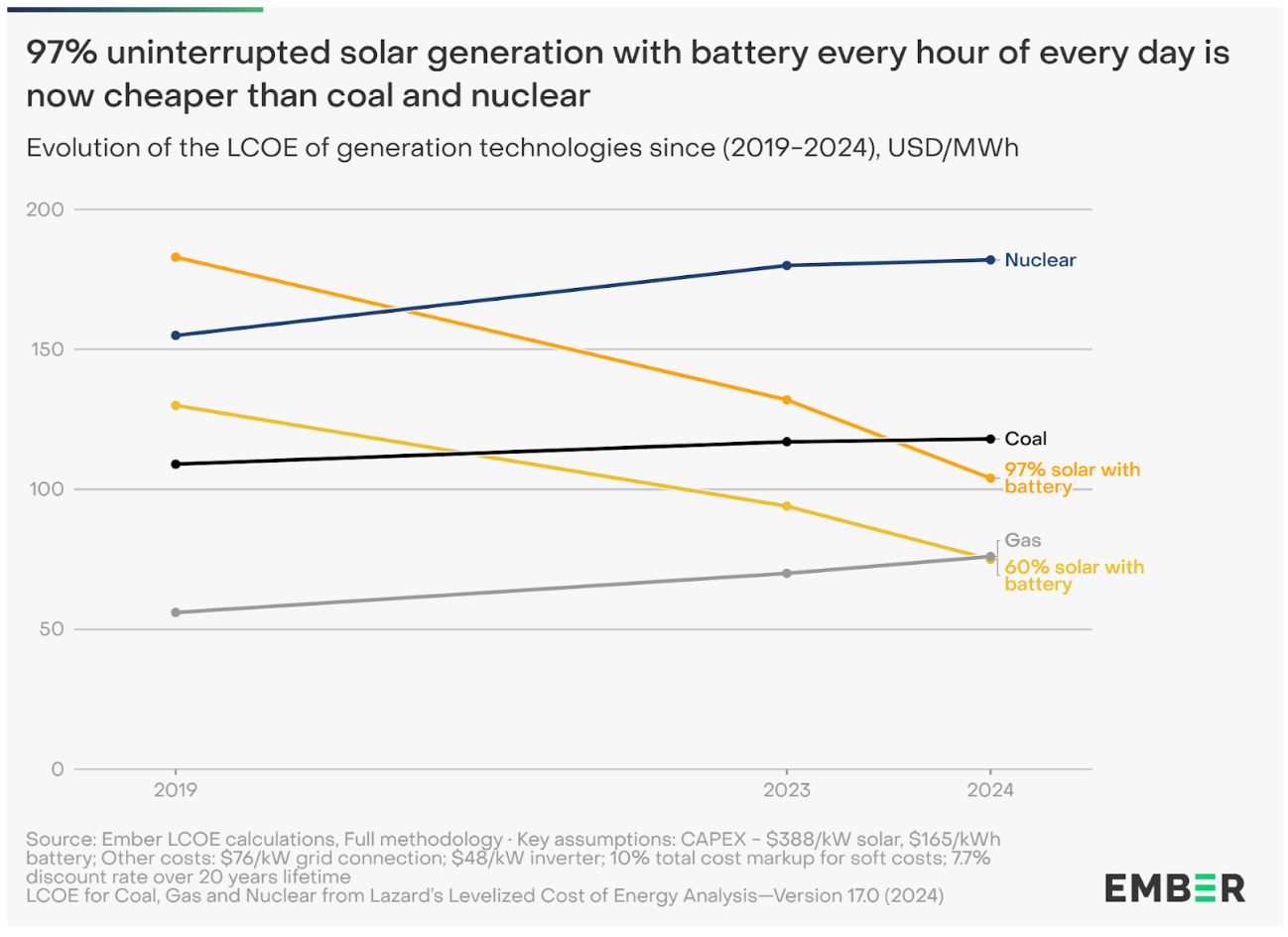
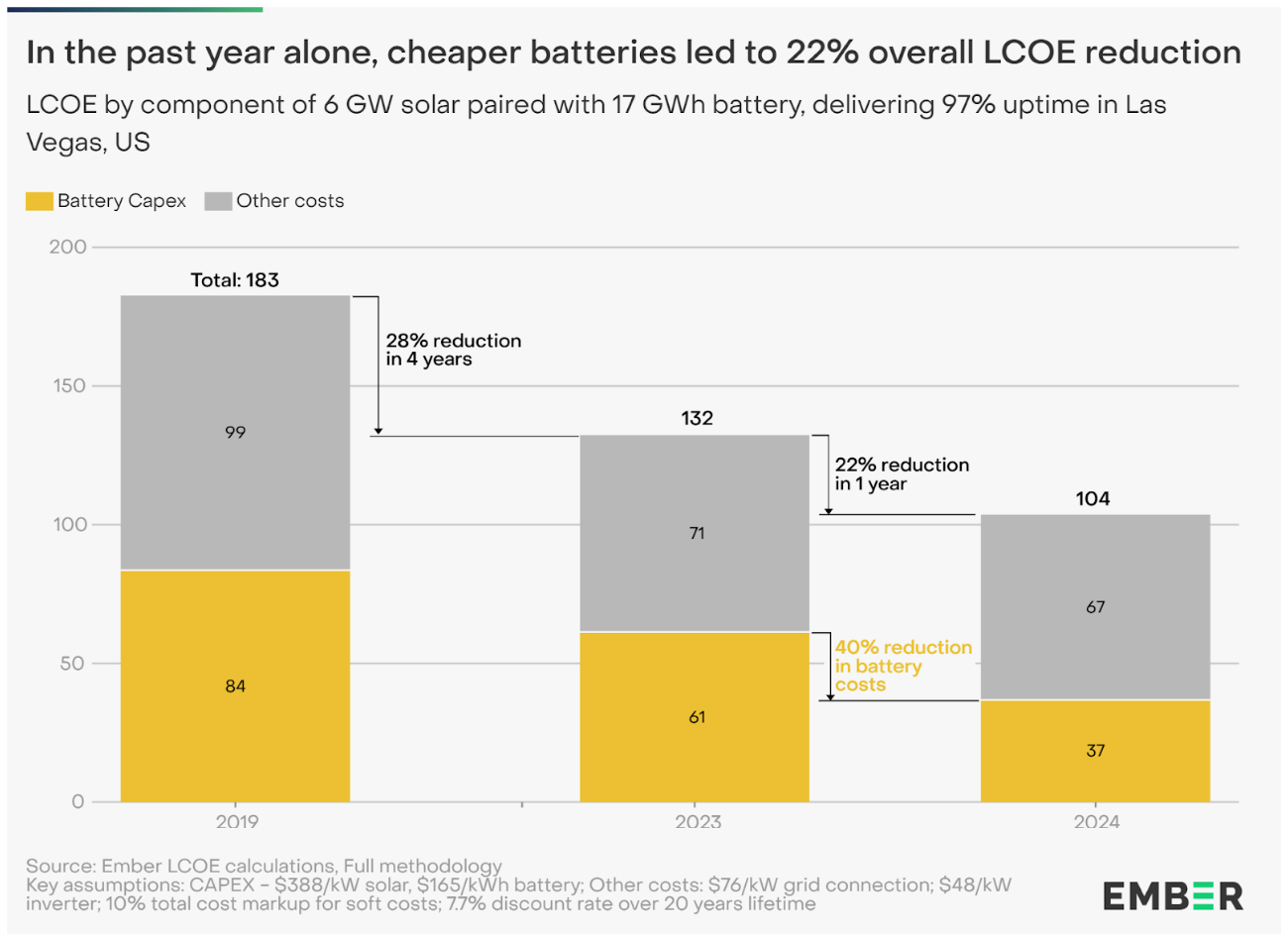
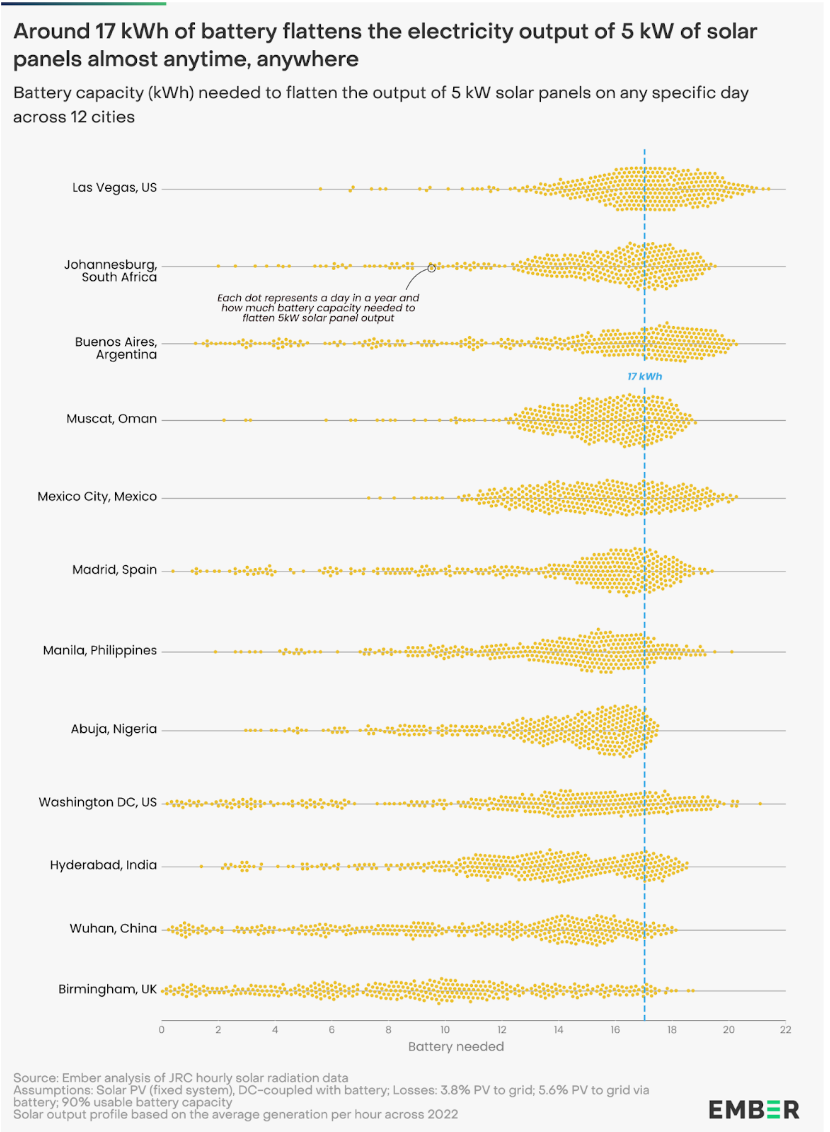
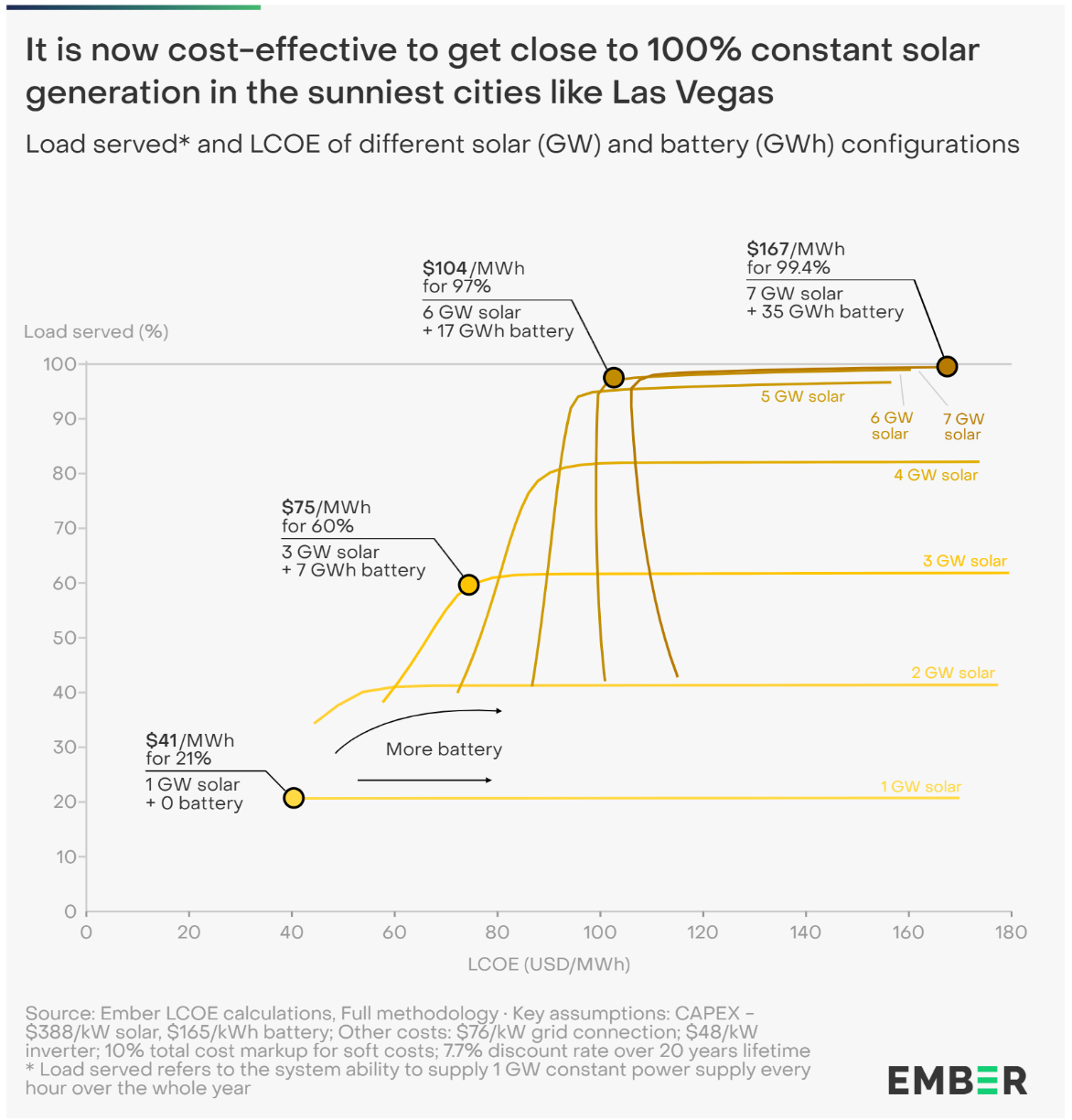
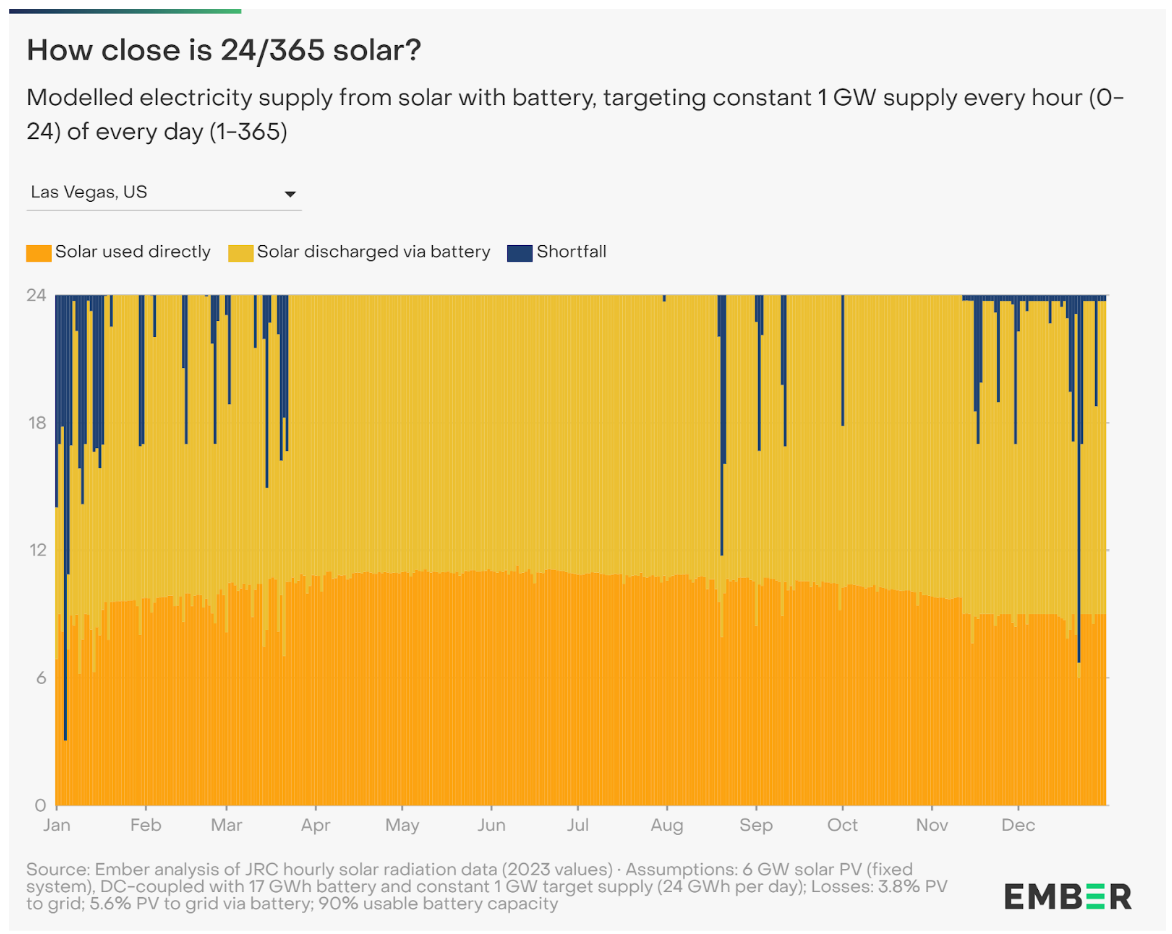
Ok, current projections are still for the next two AP1000s at Vogtle to be something like $10 billion. That's just not cost competitive with solar/wind. And it's also not very realistic to assume that there won't be cost overruns on the next one, either. Complex engineering projects tend to run over.
Next two? After you mentioned it I tried googling and can’t find anything about current projections for new AP1000s at vogtle.
This paper lays out the cost projections that one could expect with the lessons learned from Vogtle Units 3 & 4, with the tax credits and government guarantees available as of 2024:
https://web.mit.edu/kshirvan/www/research/ANP201%20TR%20CANES.pdf
According to the link you listed an AP1000 costs $66/MWh where as from the ember report that’s linked in this article solar plus storage for 97% uptime cost $104/MWh in a sunny city. In Washington DC it would cost $124 and only be able to maintain 81%. I still stand by even with the higher cost that solar + storage is a better option in places like Arizona, Nevada, Southern California ,etc. but nuclear is not as much of the high cost boogeyman as you are making it out to be
https://ember-energy.org/latest-insights/solar-electricity-every-hour-of-every-day-is-here-and-it-changes-everything/
My problem with nuclear is both the high cost and, somewhat counterintuitively, the very long life cycles to spread that high cost. The economics only make sense if the plant runs for 75 years, which represents an opportunity cost of displacing whatever might be available in 25 or 50 years.
A solar plant planned in 2025 might be online in 2027, and decommissioned in 2047, replaced with whatever technology/economics are available then. But a new nuclear reactor bakes in the costs for 80+ years, to be paid by ratepayers who haven't been born yet.
So if in 2050 a 2030-constructed nuclear plant is still imposing costs of $66/MWh on ratepayers, to finance the interest and construction costs from 25 years earlier, will that be competitive with the state of solar/wind/batteries/hydrothermal at that time? Given the past trend lines, it seems economically foolish to lock in today's prices for the next 80 years.